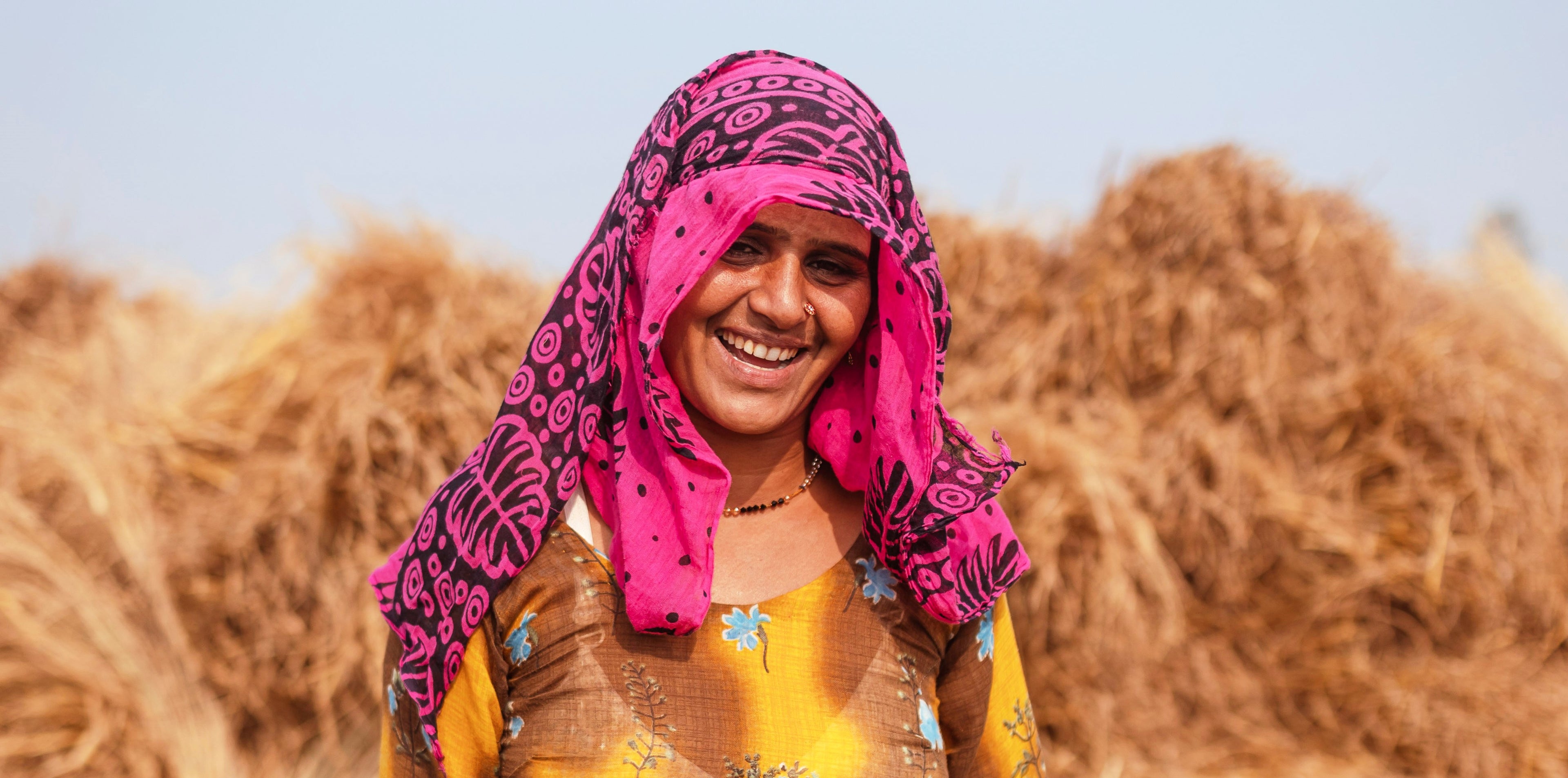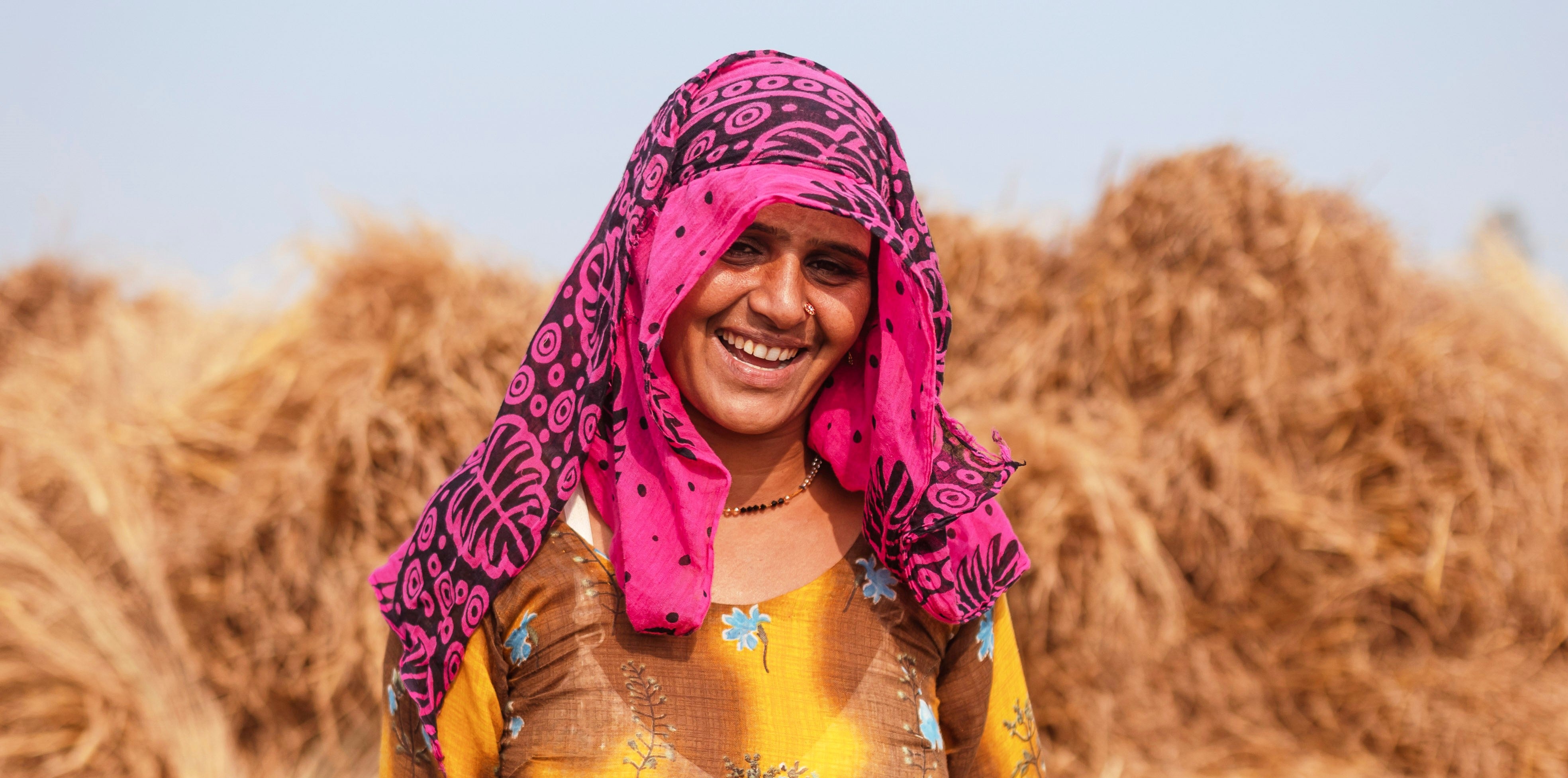Sustainability - detail
To understand sustainable rice farming, first we need to explain the problems with conventional rice farming.
When you think of rice farming you probably think of a flooded paddy field, right? That's because >90% of rice farms around the world are flooded for most of the rice growing season. Why? Primarily to stop weeds from growing.
But there's a problem. When a field is flooded it means there is no oxygen in the soil. And that creates the perfect environment for a group of methane-producing bacteria (or "methanogens" if you want to sound clever) to thrive and, you guessed it, produce methane (chemical formula CH4).

The other issue is that keeping fields flooded requires a LOT of water - as much as 5,000 litres of water to grow each kilogam of rice. That means a typical smallholder farm in India could use a mind-boggling 25 million litres of water to grow their crop. And whilst some of this water is provided by monsoon rainfall, much of it is provided by irrigation - water that is pumped out of increasingly scarce freshwater reserves in the ground.
So what makes our farms more sustainable?
Our farmers follow the SRP standard for sustainable rice cultivation - a comprehensive set of 41 practices with the overall objective of cutting emissions, improving soil health, restoring biodiversity and improving rural livelihoods.
Not only are our farmers following this standard, we're proud to say they are meeting the threshold for the highest scores possible.
Below, we take a look at some of the sustainable farming practices that we hope you'll find interesting!
Alternate Wetting and Drying
One of the most impactful elements of the standard is known as "AWD" (alternate wetting and drying). We know, it sounds like a setting on your washing machine, but it's actually a simple and really effective way of cutting methane emissions from rice farming.
By digging a length of pipe into the corner of their fields, farmers can see the water level in the soil. This means they can allow the field to dry out whilst checking that the roots of their rice crop (extending to about 15 cm below the surface of the field) are still getting water.

And when the soil water level is getting close to the bottom of the root layer they know it's time to flood their field again. Sounds simple enough, right?
Although AWD requires more labour from the farmer to control weeds it saves a LOT of water and by allowing the soil to aerate it dramatically cuts the production of methane.

Saying NO to crop burning!
Traditionally, many farmers would burn the crop stubble that is left after harvest. They do this because the burnt ashes restore nutrients to the ground and because it can help clear weeds and pests before farmers plant their winter wheat crop.
However, crop burning releases 'black carbon' - a thick greenhouse gas - into the atmosphere, contributing to the substantial emissions from conventional rice farming. It also creates terrible air quality, affecting human health. In fact, when we visited our farms during the 2022 harvest many of the farmers described how the smoke from surrounding farms meant they had permanently stinging eyes.
So what do our farmers do differently?
Rather than burn their crop stubble our farmers either turn it back into the soil (pictured below) when direct seeding their winter wheat crop OR they harvest the straw and sell it for animal feed or for conversion into biochar.

Promoting soil health
Since the 'Green Revolution' of the 1960s, the Indian government has heavily subsidised pesticides and fertilisers to improve crop yields and provide food security for a growing population. And it worked - yields have improved +250% over this period.
But our understanding of the harm caused by these chemicals, particularly when farmers haven't received adequate training, has also improved.
As a result, the sustainable farming method requires farmers to use natural preventative weed and pest control measures rather than relying on chemical herbicides and pesticides. And when chemical interventions are absolutely necessary, the farmers have clear guidelines on which chemicals to avoid and how to ensure the application of chemicals is highly targeted.
Want to know more? Here are the most common questions we get asked...
What is methane?
Methane is a greenhouse gas with 25x the warming potential of carbon dioxide. Cows are probably the best known source of methane but it is produced by lots of different natural and man-made processes - including rice farming!
How do flooded paddy fields produce methane?
Methane is produced by naturally occurring microbes in environments where there is no oxygen. When a paddy field is flooded, the soil is deprived of oxgyen. So these microbes thrive, methane bubbles up from the soil and is released into the atmosphere. By letting the field dry out, farmers allow oxgyen back into the soil which kills off these microbes.
How do emissions from rice farming compare to the emissions from shipping the rice to the UK?
This might surprise you... the agricultural emissions of conventional rice are 2.50kg CO2-eq per kg of rice. The shipping emissions (sea freight from India to the UK) are 0.16kg CO2-eq.
That's why we're banging on about the need for sustainable rice farming!
If rice is bad for the environment, shouldn't we just boycott rice?
No! Rice is hugely important for global food security - it's a staple food for over 3 billion people around the world. We believe in changing the industry for the better, not walking away and allowing the status quo to survive. So we're focused on getting more people to switch to sustainably farmed rice!
Where are our farms?
For the 2022 harvest we have sourced all of our Basmati rice from a group of 66 farmers near Fatehabad in Haryana province, India.
Choosing Nice Rice will help us show the industry that sustainably farmed rice is the future.
Are you with us?





 Shop Nice Rice
Shop Nice Rice